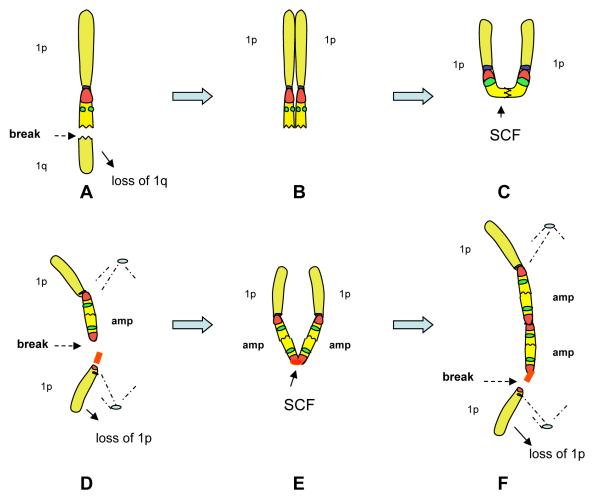Figure 5.
A possible model depicting the key steps and intermediate rearrangements of chromosome 1 in BFB cycles. As in the FISH images, red represents satII/III while CKS1B is green. Chromosome 1 can initially undergo a double strand break (DSB) in the region 1q21~23 (A) or, alternatively, a DSB in the distal pericentromeric copy of a chromosome 1 with preexisting direct or inverted duplication of 1q12~23 (not depicted). (B) The DSB in 1q12~23 can result in a sister chromatid fusion (SCF) at the DSB, which in turn will result in the formation of an isodicentric chromosome 1 (C). In the next mitosis, the isodicentric 1 will break between the centromeres, in or immediately adjacent to one of the satII/III regions. The breakage between the centromeres results in the loss of one chromosome 1p arm (D), and therefore a deletion distal to the 1q12 amplicon (amp). Following replication, a SCF takes place in the distal pericentromeric sequences, resulting in another isodicentric chromosome 1, which contains two copies of the amp (E). In the next anaphase this chromosome again breaks in one of the pericentromeric regions between the centromeres resulting in a chromosome 1 with two copies of the amplicon thus beginning the process of enlarging the amplicon ladder (F). This process may be repeated resulting in larger amplicon ladders or may subsequently be disrupted and/or masked by secondary aberrations.

